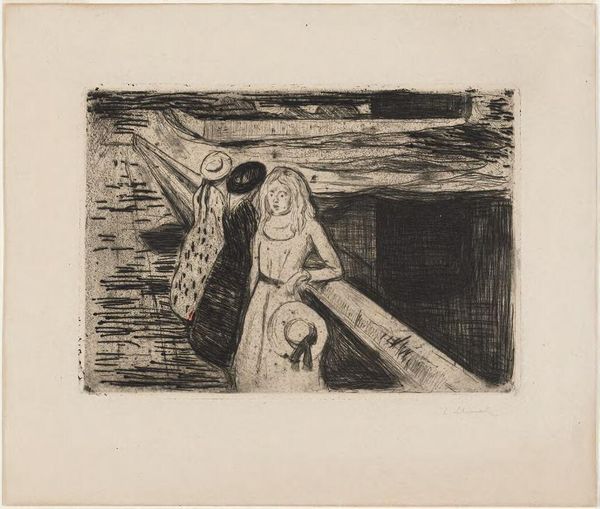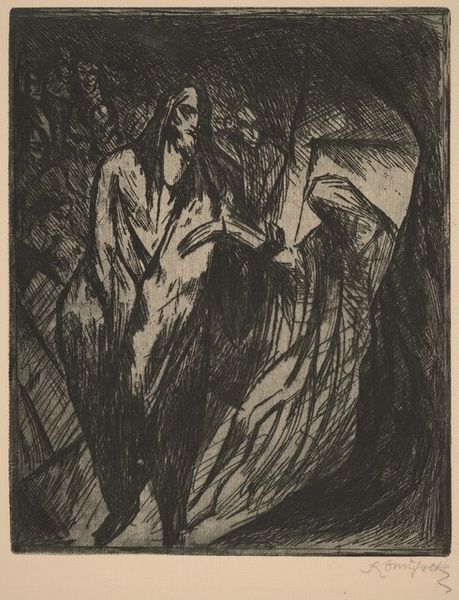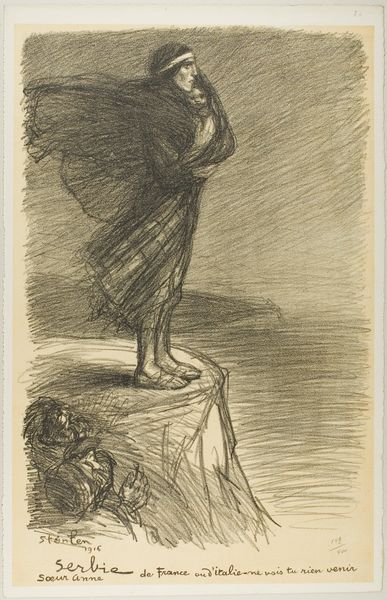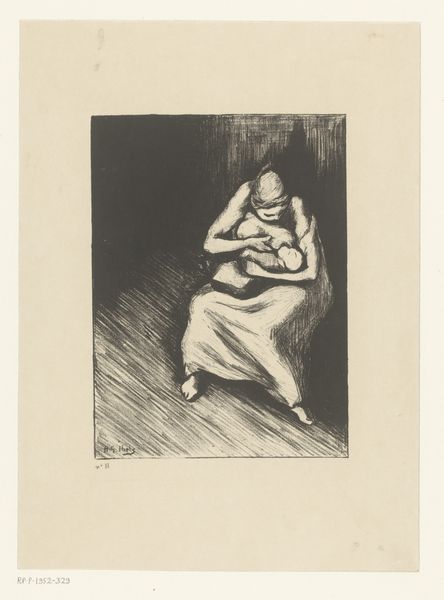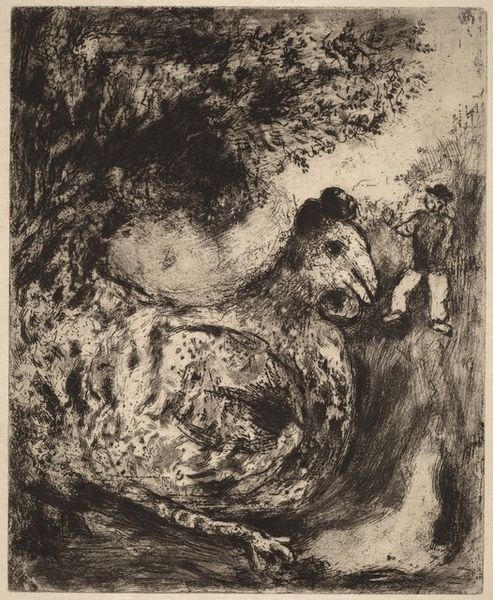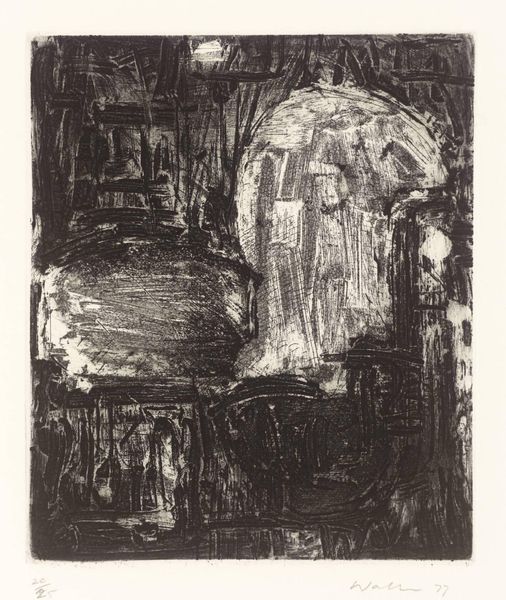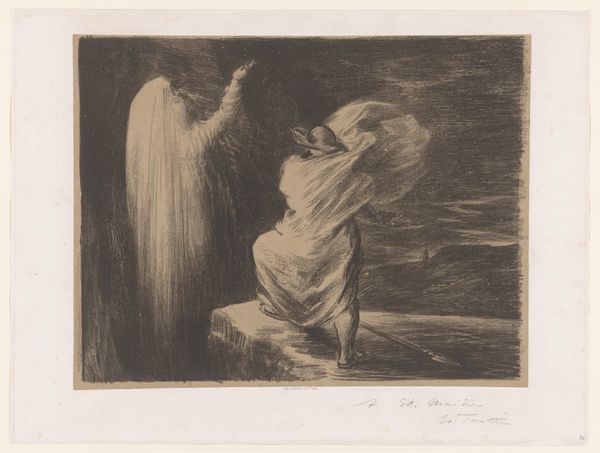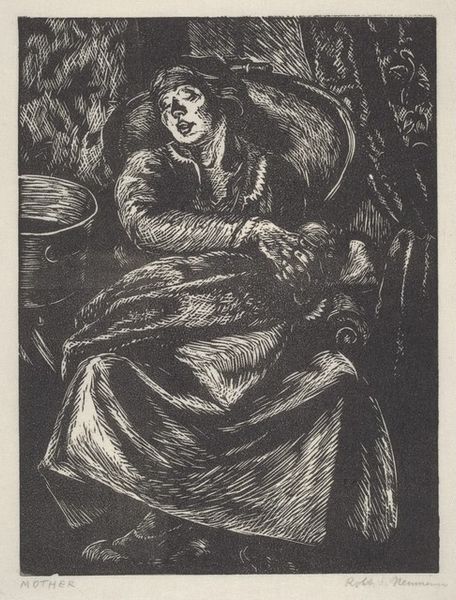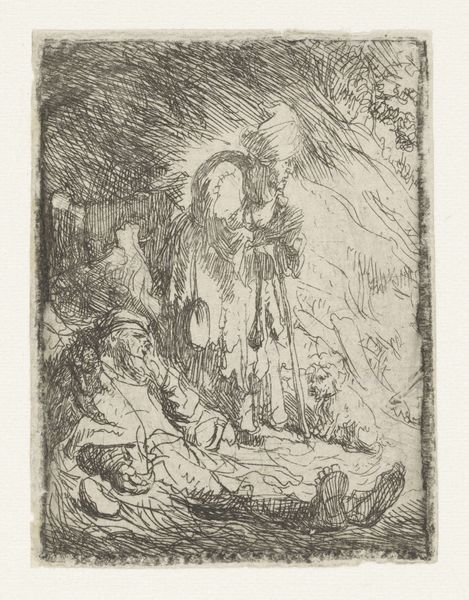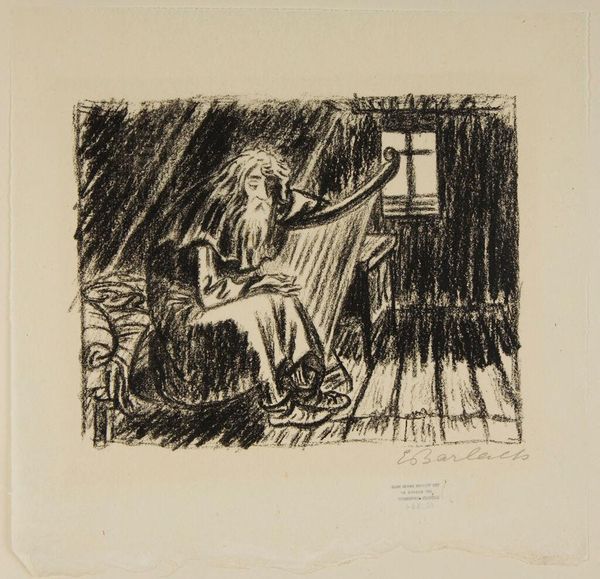
graphic-art, print, etching
#
graphic-art
#
ink drawing
# print
#
etching
#
abstraction
#
line
Dimensions: plate: 30.8 x 37.8 cm (12 1/8 x 14 7/8 in.) sheet: 38.1 x 46.4 cm (15 x 18 1/4 in.)
Copyright: National Gallery of Art: CC0 1.0
Editor: We’re looking at Jacob Kainen’s "The Midnight Sun" from 1960, a print made with etching. There’s a very raw energy in the linework that almost makes it feel chaotic, but somehow controlled. How would you interpret Kainen’s approach here? Curator: The energy comes from the immediacy of the etching process itself. Think about it: acid biting into metal, the labor involved in creating that plate, then the mechanical reproduction of that image. This isn't just about an "idea" of the sun. It’s about the very material conditions that allow that image to exist. Editor: So, you’re seeing the process as a crucial part of the art itself, not just a means to an end? Curator: Exactly. Consider the social context. Post-war America saw an explosion of printmaking. Why? Because it offered a democratic art form. Multiple originals meant wider accessibility and potentially challenged the elite control of art objects and their consumption. What do you notice about the dense areas of ink versus the white spaces? Editor: The ink feels almost oppressive in some spots, like a weight. The contrast does highlight the starkness of the “sun,” or whatever that light source might be. Is Kainen perhaps making a statement about the weight of industrialization through material and method? Curator: Potentially. Remember, Kainen wasn't just an artist, he was also a curator of prints. He would have been acutely aware of the historical baggage of printmaking – from its revolutionary potential during the Reformation to its uses in social realism. Editor: So, seeing this work now, knowing about the process and Kainen’s own position in the art world, I understand the piece less as a singular image and more as a product of particular social and material forces. Curator: Precisely. And that understanding, hopefully, changes how you "see" it, and even value it.
Comments
No comments
Be the first to comment and join the conversation on the ultimate creative platform.
